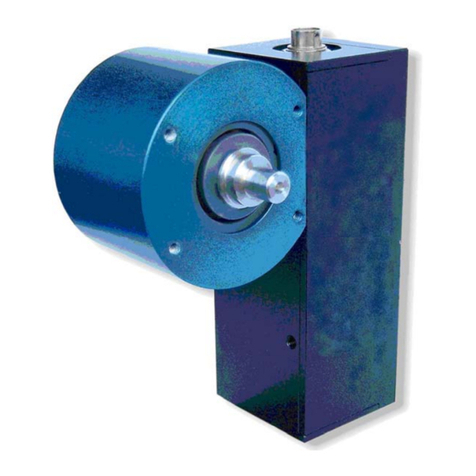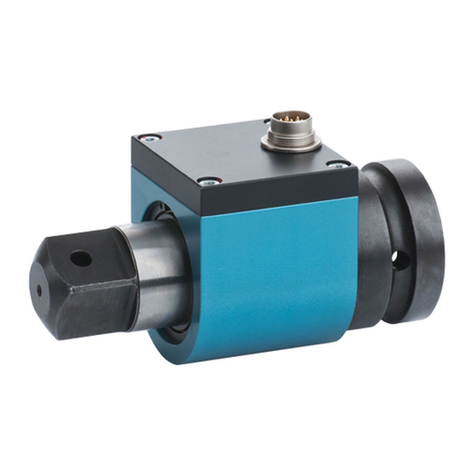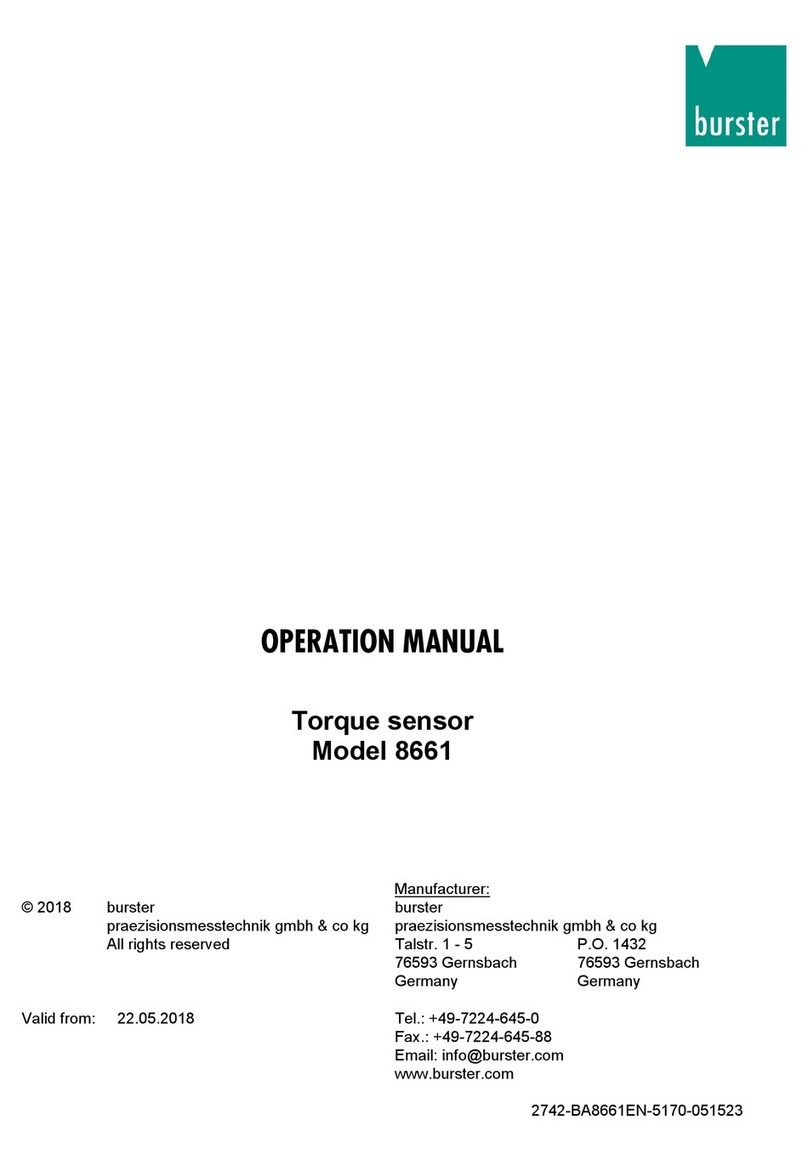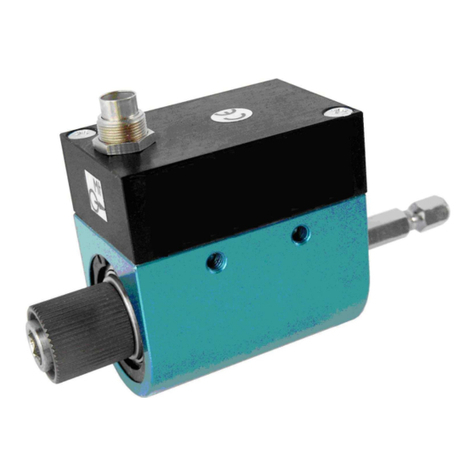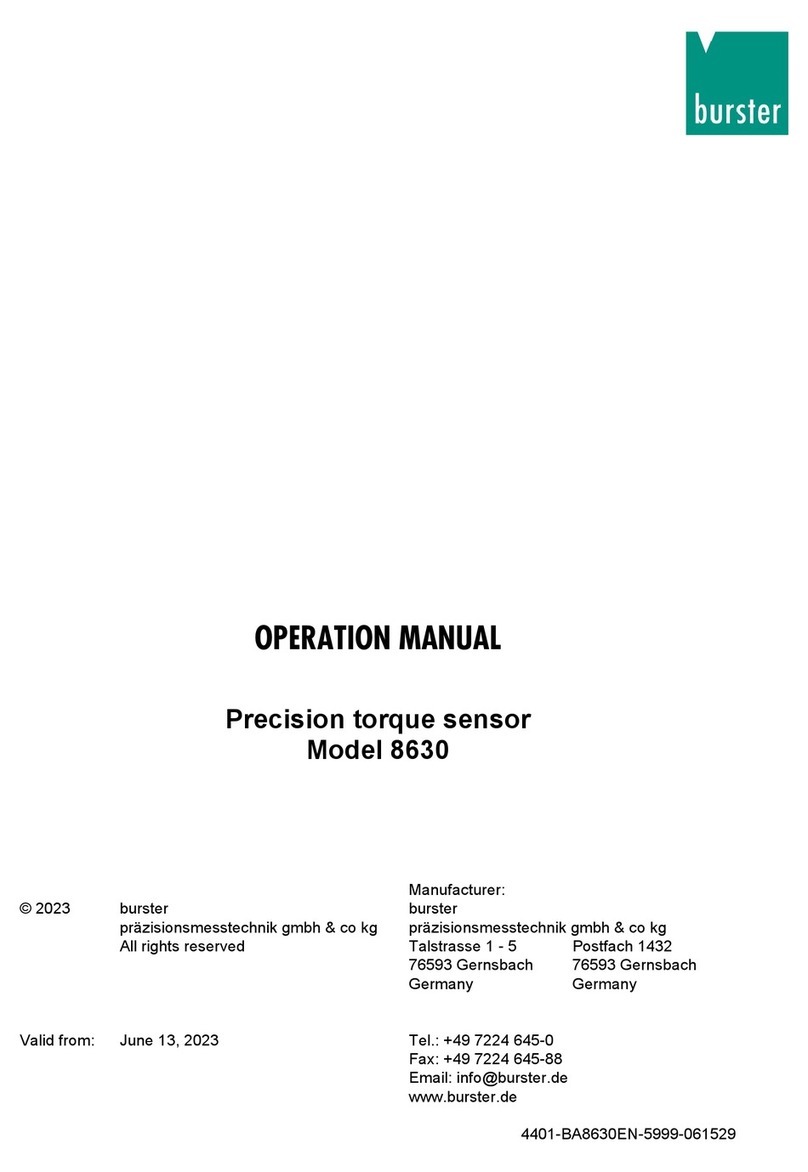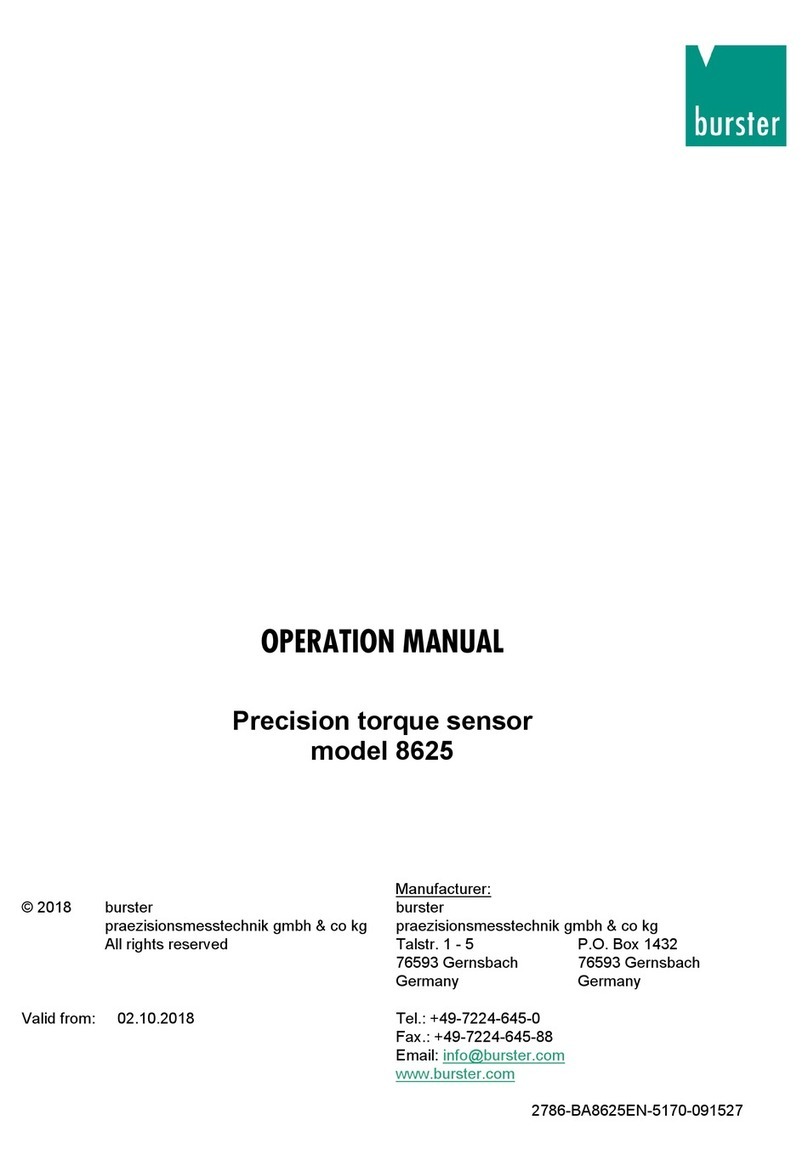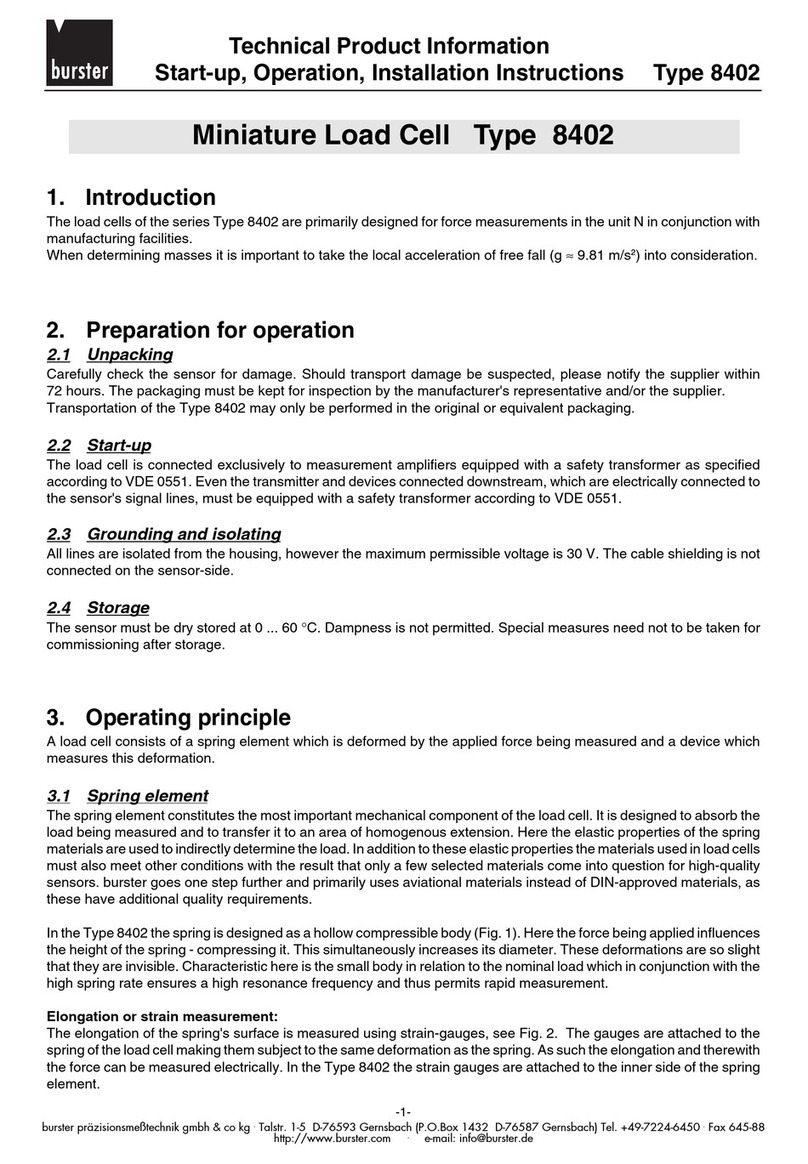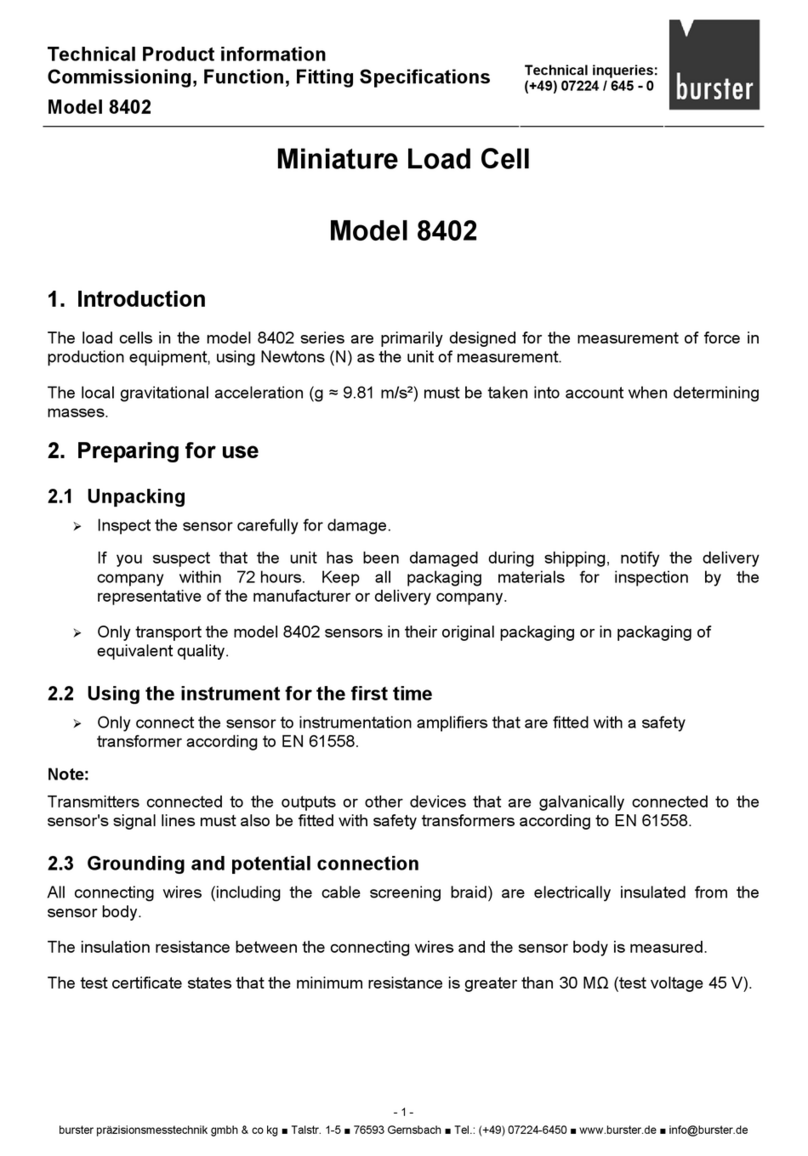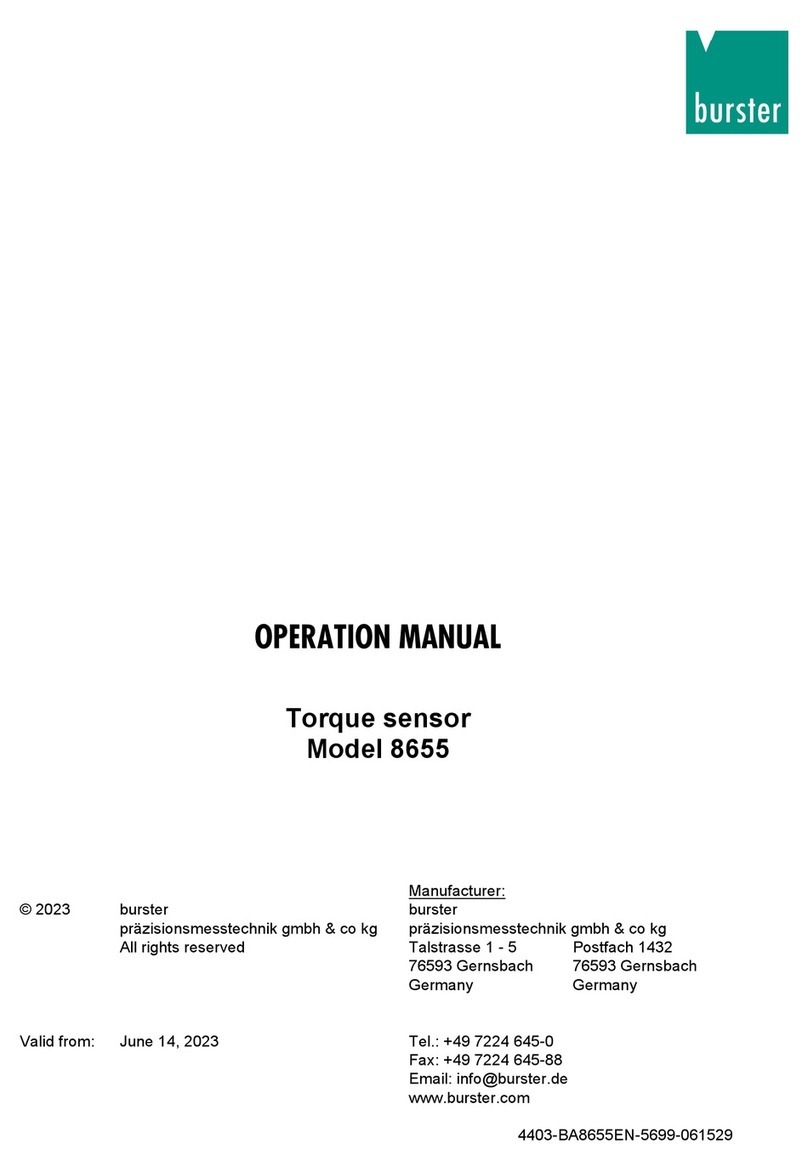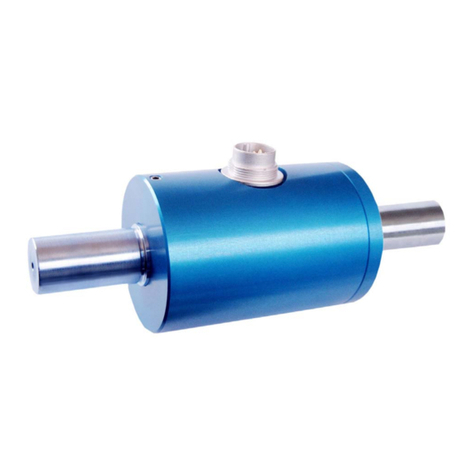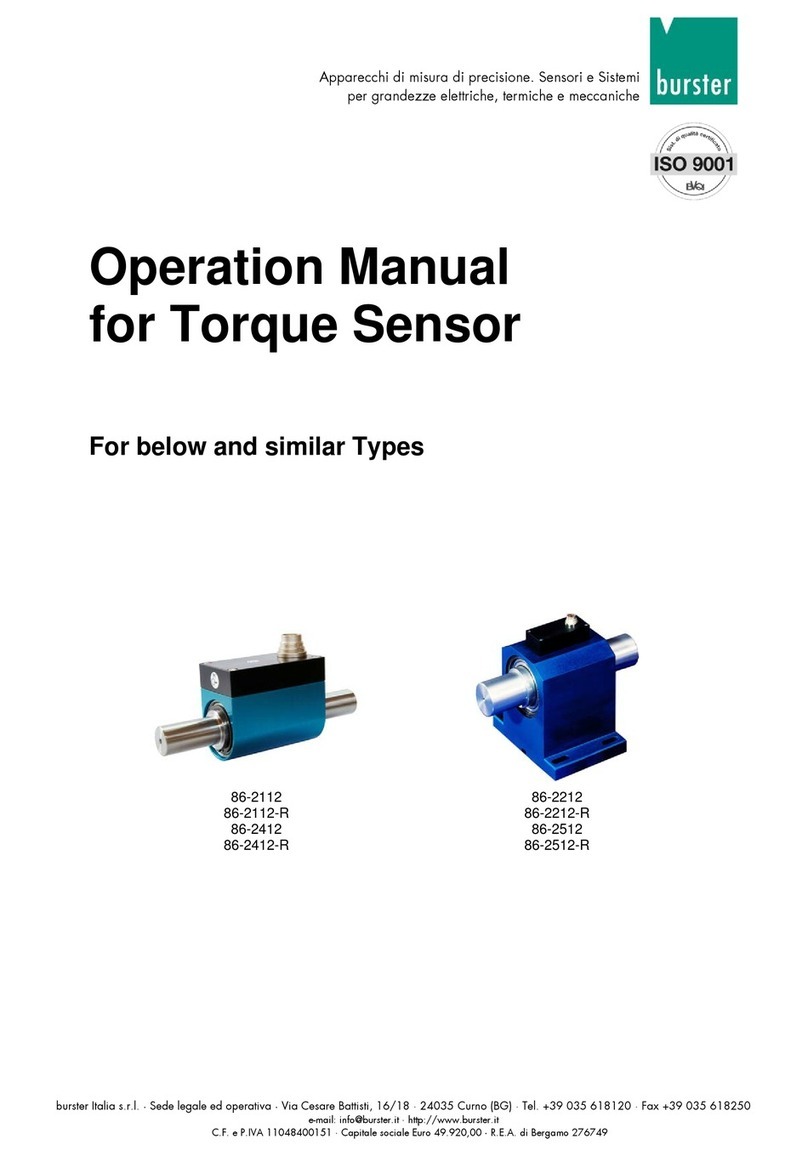
In-Line Amplifier for Strain Gauge Sensors
Page 5
Model 9235
Preparations
for operation
Operation
Calibration
and adjustment
Maintenance and
customer service
Technical
data
Appendix General
Information
Operation
elements
Table of contents
Page
1. General Information
1.1 Safety information................................................................................... 7
1.2 Application .............................................................................................. 9
1.3 Description.............................................................................................. 9
2. Preparations for operation ............................................................................. 11
2.1 Unpcking of device ............................................................................... 11
2.2 Initial operation ..................................................................................... 11
2.3 Supply voltage ...................................................................................... 11
2.4 Pin assignment ..................................................................................... 11
2.4.1 Version with Submin-D-Connectors ......................................... 11
2.4.2 Version with clamps ................................................................. 12
2.5 Grounding and potential bonding ......................................................... 13
2.6 Function test ......................................................................................... 13
2.7 Checking / Calibration interval.............................................................. 14
2.8 Mounting............................................................................................... 14
2.9 Storage ................................................................................................. 14
3. Operation elements ......................................................................................... 11
3.1 Side wall ............................................................................................... 15
3.2 Top ................................................................................................. 15
4. Operation ................................................................................................. 17
4.1 Switch on after storage or blackout ...................................................... 17
4.2 Supply of sensor................................................................................... 17
4.3 Zero point ............................................................................................. 17
4.4 Amplification ......................................................................................... 17
4.5 Sensivity ............................................................................................... 18
4.6 Input reference point............................................................................. 18
4.7 Calibration shunt................................................................................... 18
